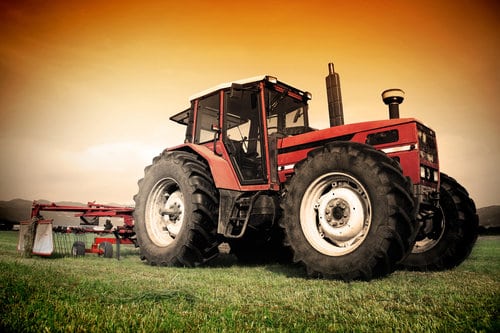
Agriculture is an occupation with a relatively high risk of injury. Common machine and tractor related injuries include penetrating injuries, degloving, amputation, and roll over injuries. Chemicals and storage silos also present risk. Blunt trauma and crush injuries can be seen related to livestock. To compound the risk, most of these injuries occur in rural areas resulting longer than usual response and transport times.
Other common injuries include suffocating in a grain silo, being kicked by cattle, or crushed. Inhalation injuries from pesticides. Also, farming is one of the few occupations where the worker’s family is also at risk of injury. This is especially true during harvest times when everyone is busy and supervision may be lacking. Small children have been run over by farm machinery or fallen off farm machinery.
In my Emergency Department career I have seen all of the above. I am going to describe a couple of these injuries to illustrate how the principles of trauma management can be life saving and to give you some idea of the possible presentations you may have to respond to.
With regard to machinery, there is a device used on tractors called the power take off, PTO. This is a splined output shaft that can be quickly connected to a farm implement machine input shaft to use the power from the tractor to run the implement. Unfortunately, I have seen cases where the farmer’s clothing, such as bulky overalls, can get caught and twisted onto this PTO resulting in severe injury to the farmer’s extremities.
As you can imagine, this may result in limb amputation and/or spin the farmer around, causing blunt trauma. Sometimes the injury might go unnoticed, such is the case with a shear injury to the skin. When the heavy fabric twists around the leg from the torque provided by the PTO, it severely twists the skin with it, and the blood supply to the skin of the leg may be sheared off. The skin will have a waxy yellow appearance. There will not be sensation either, because the cutaneous nerves are also sheared. In addition to the usual ABCs of care, this type of injury must be managed at a burn center where skin grafting can be done.
Often farmers do their own machinery repairs. I recall a case in a rural area where a fly wheel from a farm machine broke off while spinning, causing a piece to penetrate the upper thigh of the farmer. It severed both the femoral artery and vein. Fortunately, a coworker made a pressure dressing with duct tape that slowed the bleed enough for the patient to make it to the ER. He arrived in stage 4 shock. We in the ER had been notified by EMS that the patient was in shock and therefore we were able to prepare for his arrival by calling in our surgeons and anesthesia as well as getting everything we needed ready. He immediately received two large bore IVs in the ER, type-specific blood ordered, and he was under anesthesia in the OR in 15 minutes.
Minutes can make a difference in these cases. It is essential the ER be notified as soon as possible in a trauma case. Also, a decision may need to be made as to where and how to transport based on the capability of the receiving facility and the time of different transport options. Call medical direction if in doubt.


